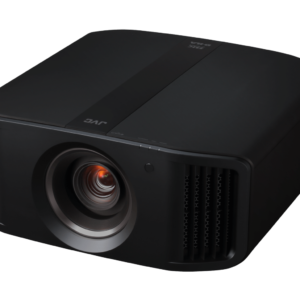By Robert Heron
June 24, 2024
Nothing can yet beat a skilled camera operator at capturing an object or scene with artistic or otherwise nuanced intent. But for those times when conditions make it impractical or impossible for a human being to manage operations from behind the lens, a programmable pan-tilt-zoom camera (PTZ camera) can provide a surprisingly flexible and increasingly capable stand-in for creative, commercial, and practical video capture applications.

It’s all in the name
As its namesake indicates, a PTZ camera uses electronically driven motors to precisely adjust the direction of its view and the degree of application of the lens’s zoom function. The range of motion of most PTZ cameras allows for up to 360 degrees of horizontal rotation (panning), with continuous rotation available with many products. The vertical tilt function of a PTZ camera generally covers about 90 degrees of motion – sometimes more, depending on the design. A PTZ camera with an optical zoom lens will maintain full sensor resolution when magnifying distant objects. In contrast, the use of a digital zoom function sacrifices image detail as it crops and scales the camera’s native resolution image to provide the appearance of a closeup view.

Cost considerations
The cost of a particular PTZ camera depends on many factors, including the type of image sensor, native resolution, optical design, and control options. At the extreme, professional-grade robotic cinema cameras can quickly approach a 7-figure price tag and combine the function and precision of an industrial multi-axis robot with the user’s choice of camera and lens options – all controlled by a custom software package to assist with setting up shots, fine-tuning, and repeatability. Some of the largest of these programmable robo-cams can exceed 4000 lbs of weight and offer a range of motion exceeding 40 feet.

The eye in the sky
The more mundane-looking PTZ security camera is about the size of a slightly shrunken soccer ball, with its rounded body mounted on a pole or the side of a building. Premium models can cost thousands of dollars per device, are weatherized for long-term outdoor use, and feature internal heaters for cold climates and wipers or other mechanisms for consistent image quality in wet weather. Surveillance cameras with infrared illumination or thermal imagers can provide a clear view when monitoring dark environments or when optical visibility is poor. Some industrial PTZ cameras incorporate protective designs, allowing them to operate in hazardous conditions, such as chemically corrosive or potentially explosive environments.

Content Creation
Commercial PTZ cameras for indoor use feature fewer environmental protective measures than their outdoor-rated counterparts. Still, they can provide features better suited for professional video production, such as full-frame sensors, upgraded optics, or the ability to select from various lens configurations. These video-centric PTZs also usually provide detailed picture control options tailored toward pre- and post-production content creation environments, including exposure, white balance, color space, and 3D lookup table (3D LUT) support.

Network friendly control
Modern PTZ cameras feature Ethernet connectivity, incorporating remote device control, audio and video streaming, and power delivery using Power over Ethernet (AKA PoE) through a single cable. Dedicated control consoles are available that enable a single operator to configure, manage, and manually operate (when necessary) dozens or even hundreds of networked PTZ cameras. PTZ control consoles are particularly useful in live video production environments where an operator must make camera adjustments on the fly during an event.

PTZ cameras also feature a browser-based interface for individual device configuration, viewing, and control purposes. Although this direct web interface provides comprehensive device control, it is not practical for real-time management of a multi-camera environment compared to a dedicated console. Most commercial-grade PTZ camera models are compatible with specific control systems (e.g., AMX and Crestron), lecture capture platforms, and network streaming and communications services.

One control advantage of surveillance PTZ cameras over their more cinematic brethren is that almost all are ONVIF-conformant products. ONVIF’s mission is “…to provide and promote standardized interfaces for effective interoperability of IP-based physical security products.” This impressively functional and widespread interoperability means that end users can mix and match PTZ cameras (and many other IP-based security products) from different brands with any dedicated controller platform that supports ONVIF’s open standards.

The effort to bring IP and network-friendly tools to the professional audio/video (AV) industry has resulted in new standards and protocols to improve interoperability among devices and platforms.
One of these standards is ST 2110, developed under the leadership of the Society of Motion Picture and Television Engineers (SMPTE). Crafted to replace the Serial Digital Interface (SDI), ST 2110 defines the communication (timing and mapping) and AV format support used in professional workflows within an IP-based network. Panasonic has already embraced this standard, releasing a PTZ camera with optional ST 2110 support, demonstrating its compatibility with popular SDR/HDR image formats, including uncompressed audio (PCM) and metadata.

Also, more professional PTZ cameras are adopting the open-source SRT protocol for secure, low-latency transport of video streams across an IP-based production environment, including optimizations for operating across “less-than-stable” networks.
Training an electronic eye
PTZ cameras are already leveraging computationally assisted training to offer more capable functionality in areas such as auto-tracking and auto-framing. A PTZ camera that can recognize the outlines and appendages of moving human subjects can better mimic the actions of a competent operator in terms of keeping the subject framed without manual intervention. PTZ cameras with fine-tuned automated framing and tracking have become an appealing and effective cost-saving investment for regularly recorded environments such as courtrooms, classrooms, and content creation studios.

Most PTZ camera manufacturers offer dedicated hardware for performing image analytics. These appliances can augment PTZ cameras that lack the onboard processing power to perform specific tasks or to ease the implementation and management of analytic functions across an array of networked devices. Beyond the autonomous framing and tracking features, modern analytic packages can also provide numerous practical functions, including processing recorded sounds, identifying faces, and generating object metadata for enhanced object classification and video search functions.

The latest PTZ surveillance cameras incorporate increasingly sophisticated object recognition with motion detection and tracking to better consistently record desirable targets, such as people or vehicles, and ignore undesirable targets, such as animals or wind-driven foliage moving within the scene. In this scenario, the benefit of a PTZ camera is its ability to autonomously monitor a large area of interest while providing detailed closeup imagery of any subjects within its view. Some vehicle-optimized cameras are also adept at recognizing license plates, capturing a separate image, and performing optical character recognition (OCR) for further analysis or use in a database. With the optical zoom of some premium PTZ cameras exceeding 40x magnification, automated license plate readers (ALPRs) can be effective at more than 200 yards.

PTZs for everyone
PTZ cameras are tools for content creation, monitoring, and surveillance without the need for a human operator – or at least fewer of them. While some aspects of PTZ cameras and their related machine-trained features can justifiably conjure Orwellian-ish thoughts, these features are finding their way into increasingly affordable products that provide real-world benefits to the average person. Compared to their static counterparts, PTZ cameras deliver a more dynamic view of the world and ourselves.
Robert is a technologist with over 20 years of experience testing and evaluating consumer electronics devices, primarily focusing on commercial and home theater equipment.
Robert's expertise as an audio-visual professional derives from testing and reviewing hundreds of related products, managing a successful AV test lab, and maintaining continuous education and certifications through organizations such as CEDIA, the Imaging Science Foundation (ISF), and THX.
More recently, Robert has specialized in analyzing audio and video display systems, offering comprehensive feedback, and implementing corrective measures per industry standards. He aims to deliver an experience that reflects the artists' intent and provides coworkers and the public with clear, insightful product information.










